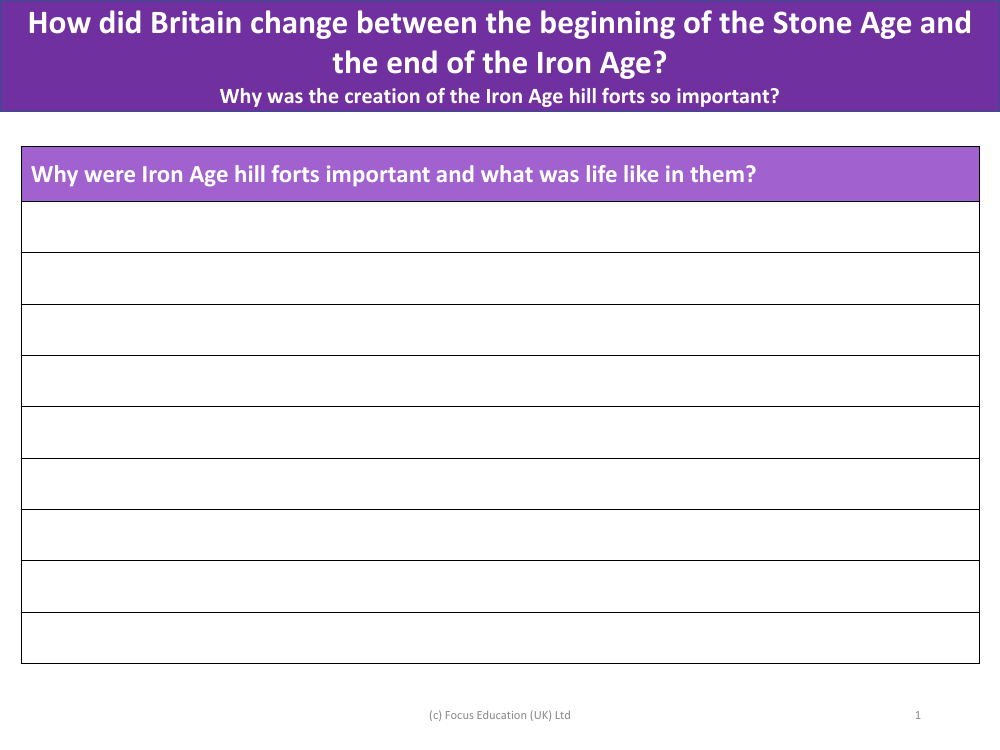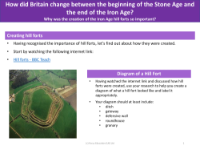Iron Age hill forts - Writing task

History Resource Description
Iron Age hill forts were significant defensive structures that played a crucial role in the lives of Iron Age communities. These forts, often strategically positioned on elevated ground, provided safety and a vantage point to monitor for potential threats. Life within these forts was communal and industrious, with people engaging in various activities such as farming, crafting, and trading. The forts served as social hubs where cultural practices and communal decision-making took place. The construction of these forts, using earthworks and timber, is a testament to the ingenuity and cooperative spirit of Iron Age societies.
Britain underwent transformative changes from the beginning of the Stone Age to the end of the Iron Age. Initially, during the Stone Age, people were nomadic hunter-gatherers, but over time they developed farming techniques, leading to settled communities. Advancements in technology saw the progression from stone tools to the use of metals, with the Bronze Age introducing metalworking skills that were further refined in the Iron Age. The creation of Iron Age hill forts marked a significant development in social organisation and defence, reflecting the increasing complexity of societies and their need for protection against both internal conflicts and external invasions. These forts symbolised a new era of territoriality and community resilience.





